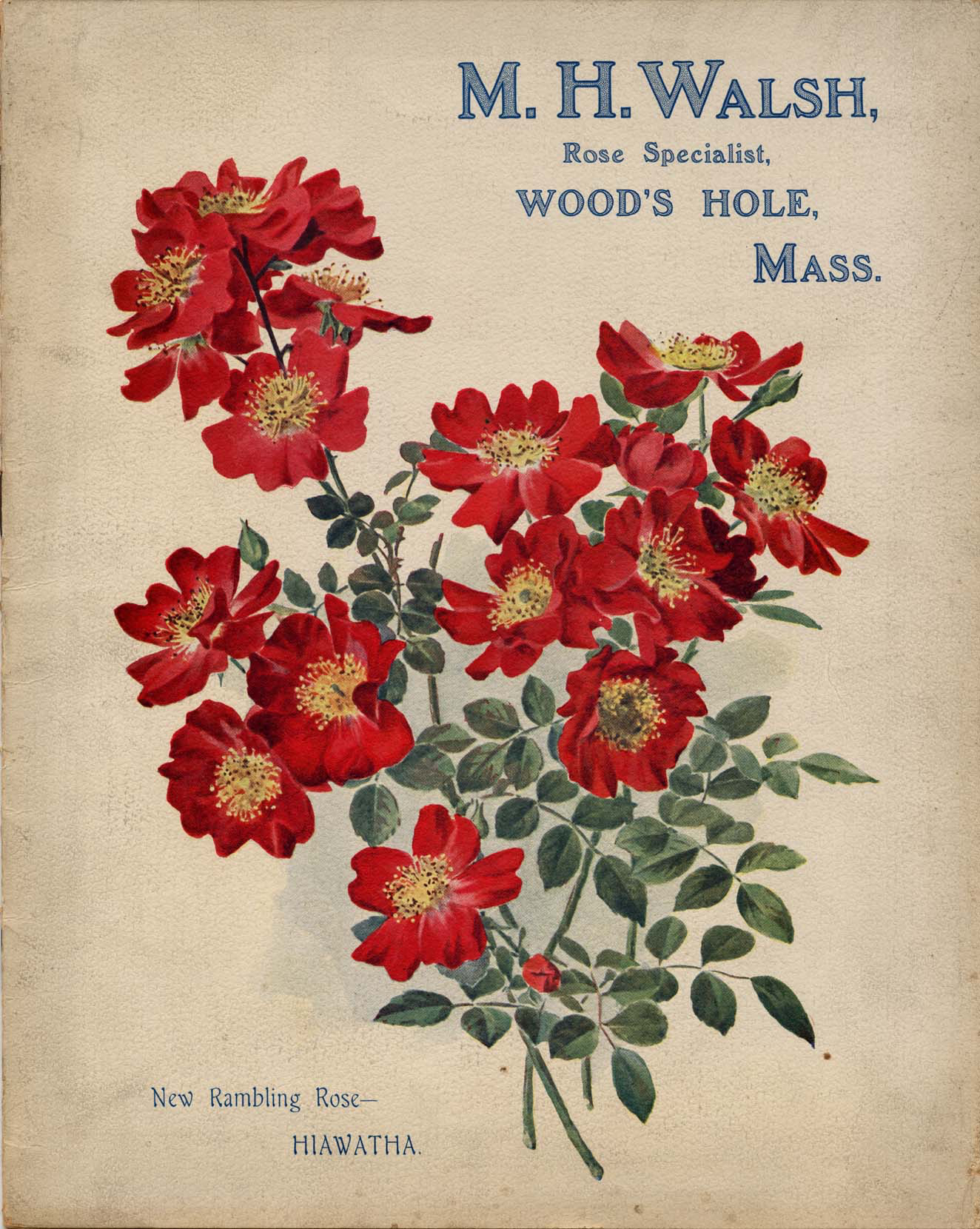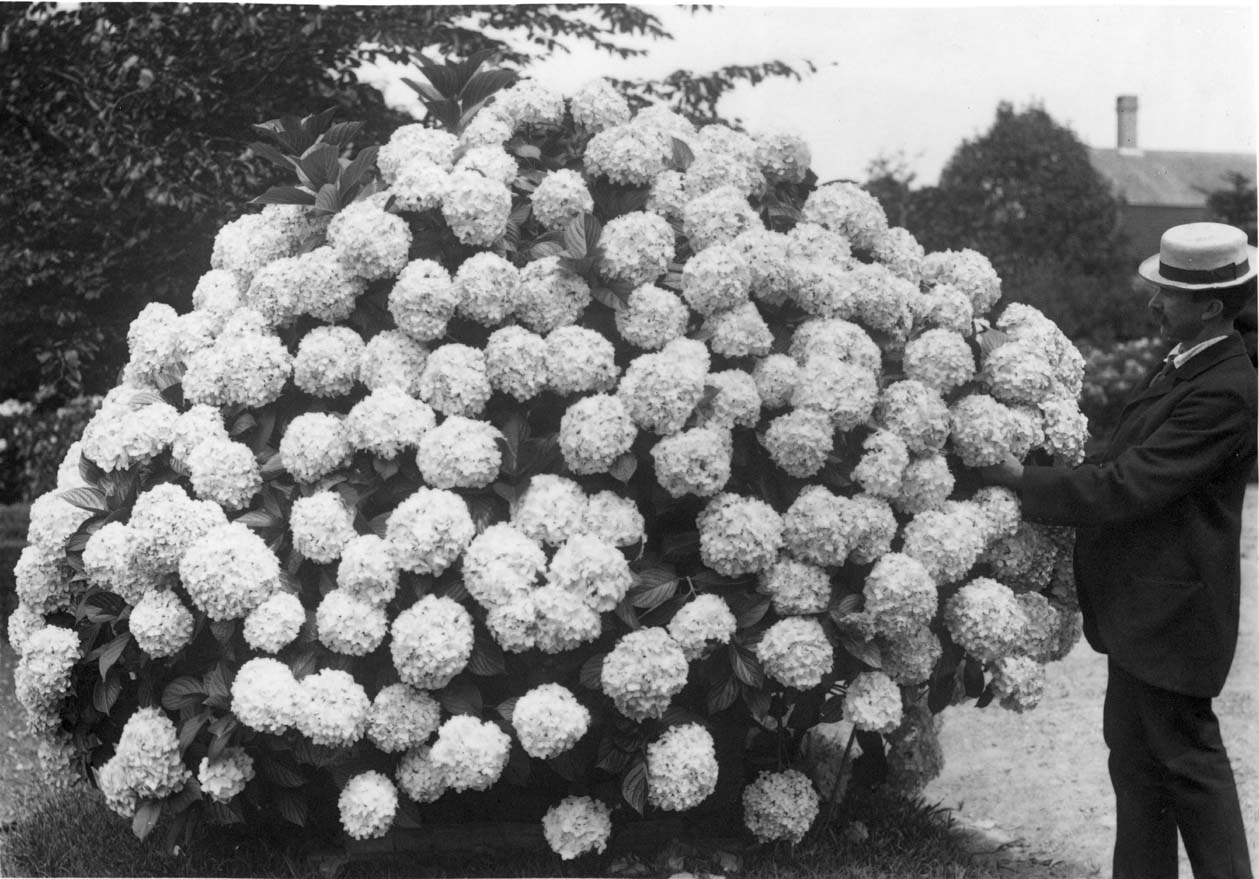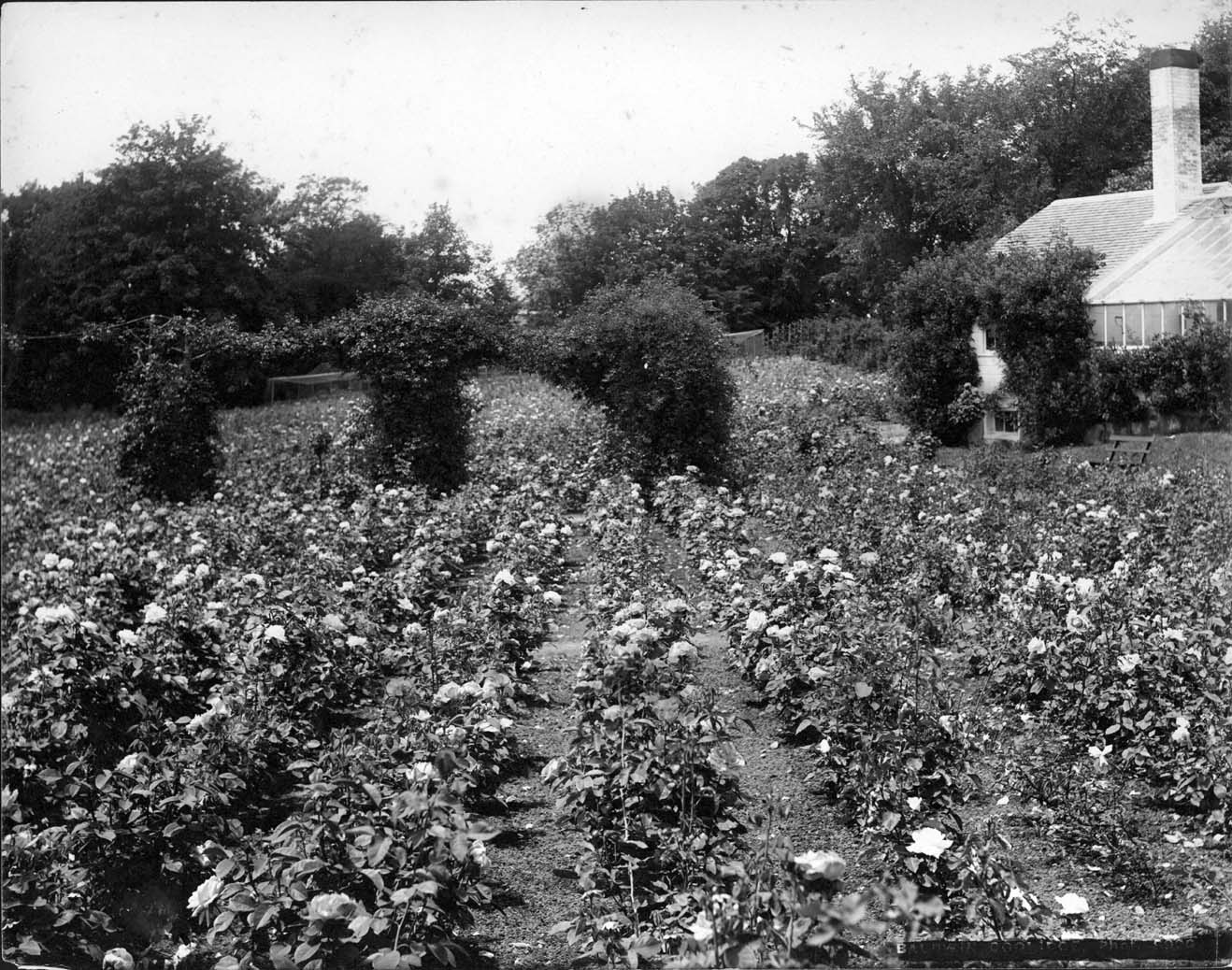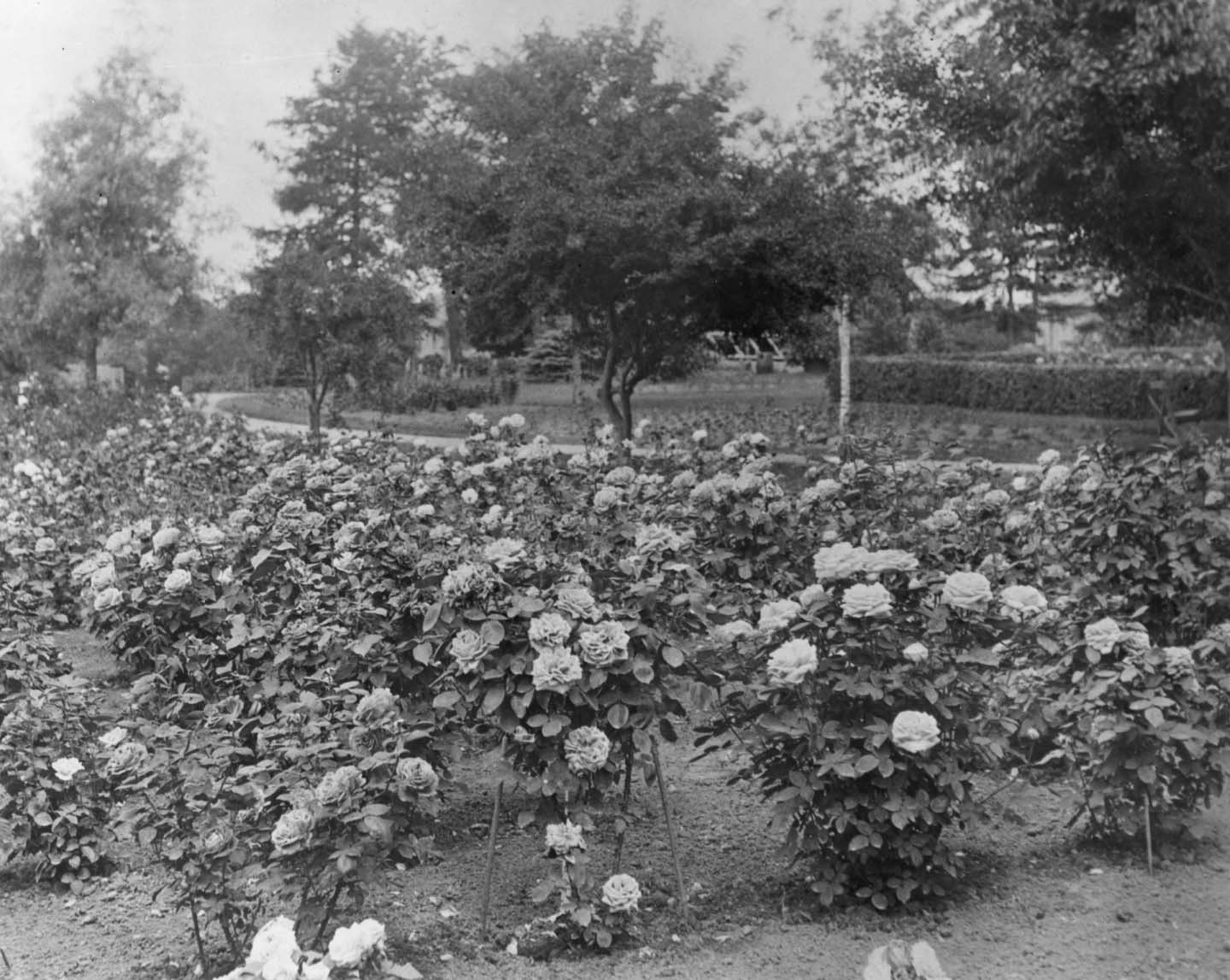- Introduction
- Early Years
- Fishing and Whaling
- The Guano Company
- The Fish Market
- Stores and Markets
- Drug Stores
- Garages and Parking Lots
- Coal
- Restaurants, Ice Cream Parlors, Bars
- Tea Rooms
- Hotels and Boarding Houses
- The Breakwater Hotel
- --------
- Walter Luscombe, Entrepreneur
- Franklin Gifford, Painter
- Michael Walsh, Gardener
- Barbers
- Blacksmiths
- Carpenters
- --------
- About
Walsh's Rambler Roses

Michael Walsh, a Welsh man of Irish descent, came to Woods Hole in 1875 to work as a gardener for local summer resident Joseph Story Fay. Large flower gardens filled the hillside behind the Fay house on Woods Hole Road (569 Woods Hole Road). Later, in the 1890s, Walsh began to develop the rambler rose. He was strongly encouraged in this endeavor by Fay and his daughter Sarah Bryant Fay. She hired another gardener to take over the day-to-day management of the family gardens and farm and left Walsh to work full-time on his hybridization of roses.
In 1897, the year that Joseph Story Fay died, greenhouses with potting and heating sheds on the ends were built on the upper hillside and rows and rows of roses in beds, on cedar pillars and trellises spread across the lower hill and garden. The garden was a great attraction to visitors but it was also a very successful business. In 1907 through 1917 Walsh began producing yearly catalogs of his roses, other flowers and bushes; the business became a nationally and internationally known source of roses.
Walsh and Miss Fay exhibited their roses at the Massachusetts Horticultural Society and won many prizes. In 1905 he was awarded the Gold Medal by the Royal National Rose Society of Great Britain for the rose ‘Lady Gay’. In 1912 the Massachusetts Horticultural Society gave Walsh the George Robert White medal for eminent services to horticulture. In 1914 he received the Gertrude Hubbell Gold Medal from the American Rose Society. Photos of these prizes were proudly shown in his catalogs. The sale of roses nationally and internationally was so great that a federal inspector actually lived on the Fay estate to certify the enormous number of shipments out of the state. The roses were shipped on the New York, New Haven & Hartford Railroad train out of Woods Hole.
Ironically, in 1901 the New Haven was in the process of demolishing their old wooden railroad station so they could build a new brick one. The old station was set afire. The fire burned for three days; the toxic smoke from 30 years of steam locomotive emissions and old wood destroyed Walsh’s entire crop, several thousand feet away and down wind of the blaze. He tried to get railroad officials to put out the fire but was unsuccessful. He and Miss Fay sued the New Haven for damages and settled out of court for $20,000.
Michael Walsh also purchased land along Nobska Road or Shore Road as it was called then. He worked on roses separately from the Fay estate until his death in 1922. His children continued the business until about 1930. The land was eventually purchased by Sidney Lawrence and made into commercial farmland.



